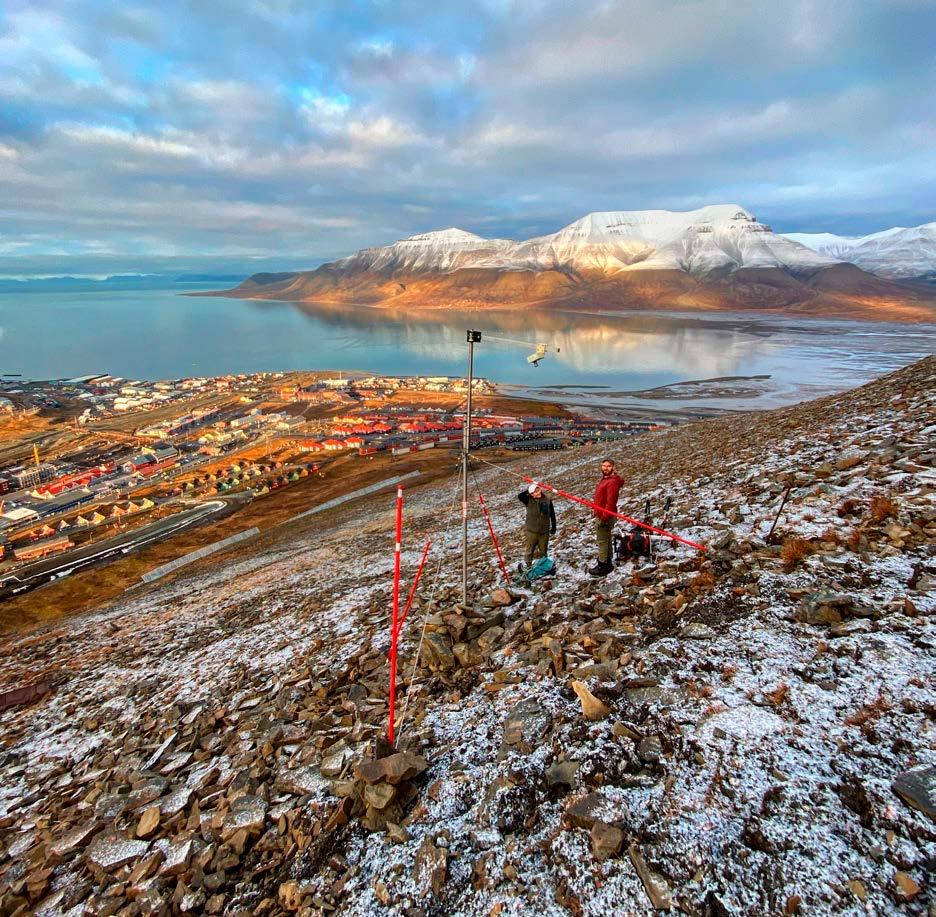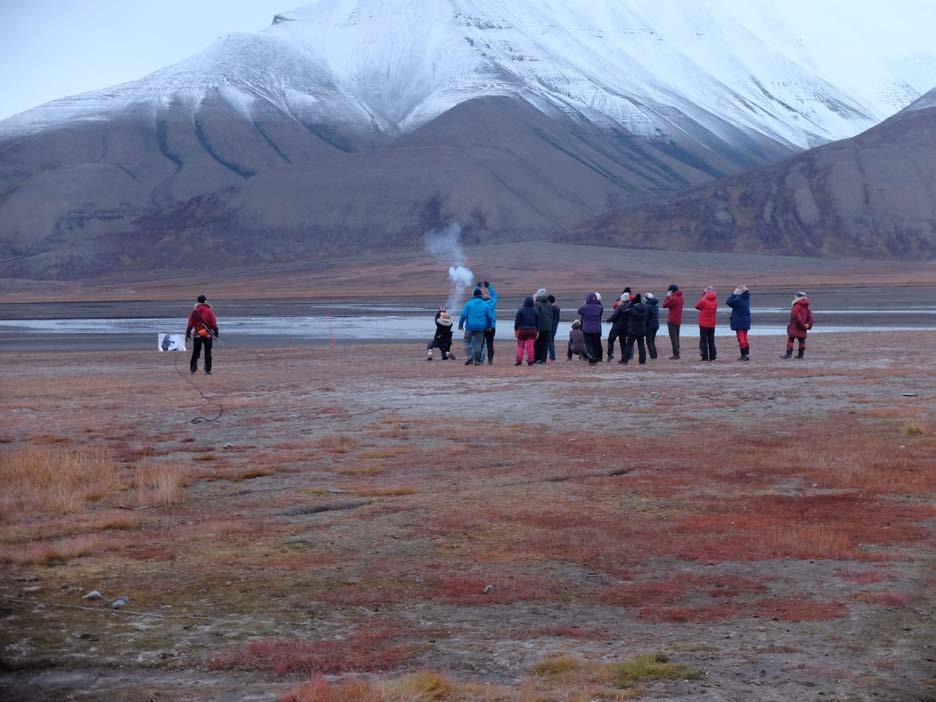
2 minute read
ARCTIC SAFETY CENTRE
October 2020: Installation of Driva snow sensors for the coming winter season on the Sukkertoppen mountain. Photo: Charlotte Sandmo/UNIS.
BY MARTIN INDREITEN, OPERATING MANAGER
Advertisement
In 2020, the centre has had a fulltime operating manager, a part-time position related to administration and an adjunct staff of four professors. In addition, technicians at the section for operations and field safety have contributed as instructors on various safety courses.
The centre’s main task is to offer research-based and practical knowledge and expertise related to safety for the local community, with businesses and other actors who conduct field activity on Svalbard. Focus areas are supporting field safety, societal safety, and emergency preparedness - all in an Arctic context with natural hazards and climate adaptations as important factors. The basis for the centre’s activities is more than 30 years of experience from UNIS’ field activities related to teaching and research. The government’s “Strategy for innovation and business development in Svalbard” has been a guideline for the activity in the centre over the past year.

September 2020: The Arctic Safety Centre in collaboration with UNIS arranged a polar bear safety course for the locals in Longyearbyen. Photo: Eva Therese Jenssen/UNIS.
EDUCATION
In collaboration with the AT department at UNIS, the centre has four MSc courses in Arctic Safety. The courses are popular and were fully subscribed for the autumn of 2020, but unfortunately, they were cancelled due to Covid-19.
In the autumn of 2020, a further education course in Arctic Safety and Preparedness (7.5 ECTS) was arranged for the first time in collaboration with NTNU-Videre. The course received great interest in the local community, and the 25 study places were a hundred percent oversubscribed. The course had participants from local business, administration, emergency preparedness actors and internal participation from UNIS.
A two-day course in polar bear safety for the Longyearbyen public has also been arranged in autumn 2020.
RESEARCH
In the autumn of 2020, NTNU and the Arctic Safety Centre were granted NOK 12 million (plus NOK 5 million in-kind) for the project Risk governance of climate-related systemic risk in the Arctic (Arct-Risk). The project will start in 2021 and will run over three years. This project will have three full time employees in Longyearbyen: a researcher, a postdoc, and a PhD candidate working full time on this project. SERVICES
The centre coordinates the local snow observation group, which provides weekly snow observations for the local avalanche warning system in Longyearbyen. The service is delivered to the Longyearbyen Community Council and is a key source of information for the avalanche warning system which is used to protect people and infrastructure in Longyearbyen. The centre has provided technical assistance in accident investigations related to field activity and has published a learning report related to the avalanche accident on the Fridtjovbreen in February 2020.
INNOVATION AND DEVELOPMENT
The centre has worked closely with Telenor Svalbard on the development of snow sensors in the last couple of years. The sensor technology uses IoT technology (Internet of Things) to send snow depth measurements in real time. These provide supplementary information about the snow cover that is used in local avalanche warning system. In 2020, a three-year project was started with Nordkapp municipality in mainland Norway. The project is based on the experiences from Longyearbyen and the same type of technology and sensors will be used in local avalanche warning system for exposed infrastructure in Nordkapp.









